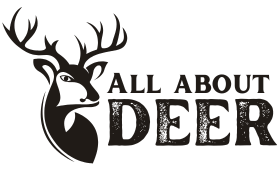The Northern Pudu, often dubbed the “world’s smallest deer,” is a charming and diminutive member of the deer family. Native to the lush forests of South America, these tiny creatures captivate hearts with their miniature size and shy demeanor.
Table of Contents
Species Data
- Class: Mammalia
- Order: Artiodactyla
- Family: Cervidae
- Scientific Name: Pudu mephistophiles
- Life Span: 8 to 10 years
- Height: 26-32 cm (10-12.5 inches)
- Weight: 8-13 pounds (3.6-5.9 kilograms)
Description
The Northern Pudu is truly a pocket-sized deer, characterized by its small stature and adorable appearance. These deer have a reddish-brown coat with white spots on their back. Despite their size, they have remarkable agility and are known for their leaping ability.
Appearance
One of the most endearing features of the Northern Pudu is its tiny size. Their large, expressive eyes and rounded ears add to their charm. While males (bucks) have small antlers, they are often hidden beneath their thick fur.
Behavior
Northern Pudus are incredibly shy and elusive creatures, making them a rare sight in the wild. They are primarily crepuscular, meaning they are most active during dawn and dusk. Pudus are known for their impressive ability to navigate through dense undergrowth.
Habitat
They inhabit the dense, temperate rainforests of South America, particularly in Colombia, Ecuador, and Peru. Pudus are masters of camouflage and can blend seamlessly into their forested surroundings.
Diet and Nutrition
Northern Pudus are herbivores, primarily feeding on leaves, twigs, and fallen fruits. Their small size means they don’t require a substantial amount of food, making them well-suited to their forest habitat.
Mating Habits
Pudus typically mate in the fall or early winter, with a gestation period of about 210 days. Female Pudus give birth to a single fawn, which they nurture and protect in the dense underbrush.
Mating Behavior
- Reproduction Season: Fall or early winter
- Pregnancy Duration: Approximately 210 days
- Baby Carrying: Females protect and nurture their fawns in the forest undergrowth
- Independent Age: Fawns become independent at around 6 months
- Female Name: Doe
- Male Name: Buck
- Baby Name: Fawn
5 Fun Facts for Kids
- Northern Pudus are considered the world’s smallest deer species.
- Despite their size, they are excellent jumpers and can leap over obstacles with ease.
- They have a keen sense of smell, which helps them detect predators in their dense forest habitat.
- Pudus are solitary animals and prefer a quiet, solitary life.
- Their tiny size and cute appearance make them a favorite among wildlife enthusiasts.

